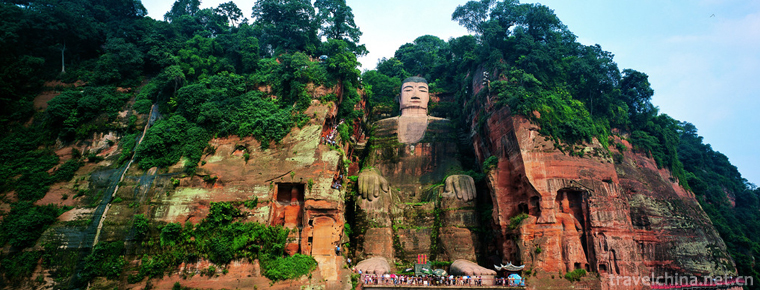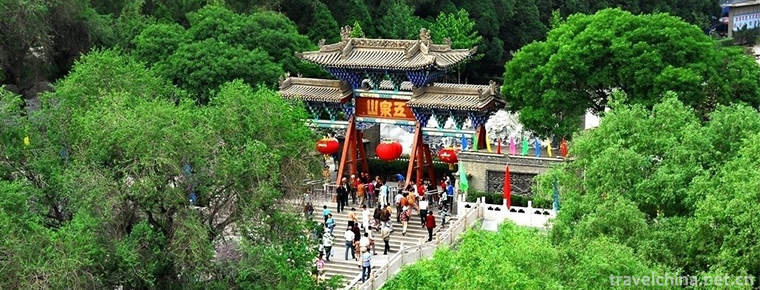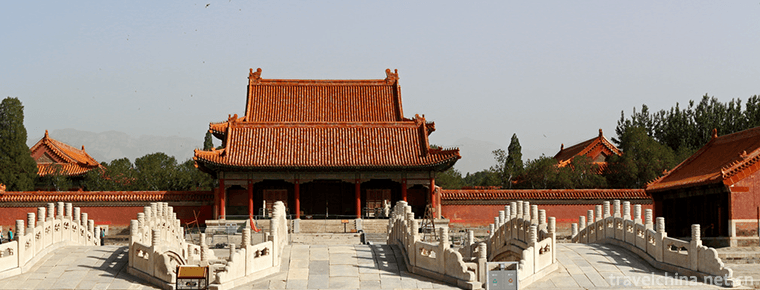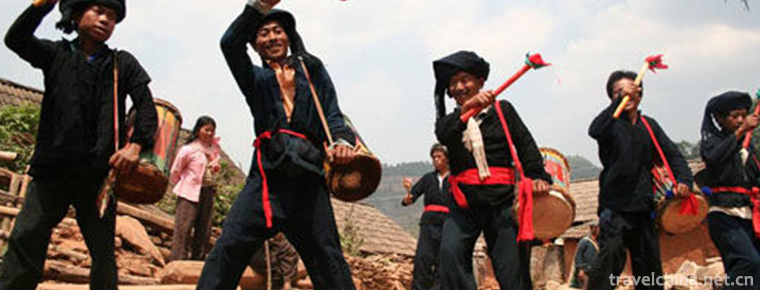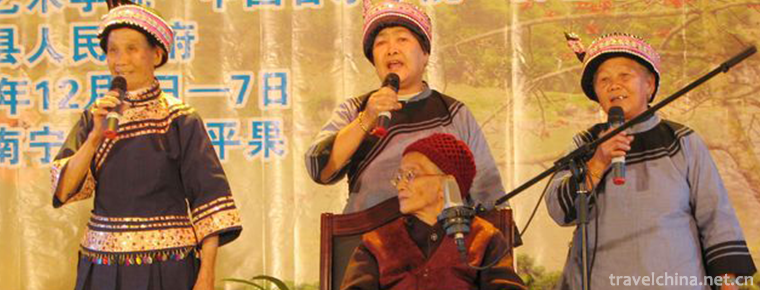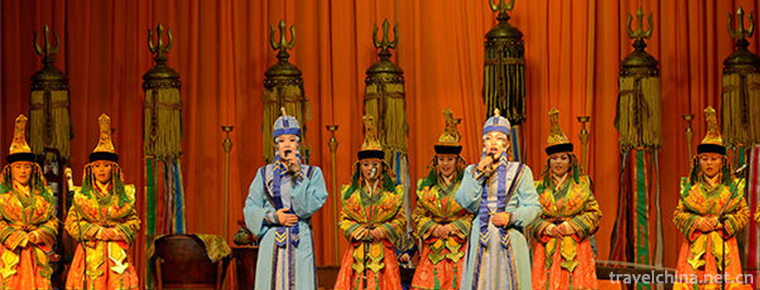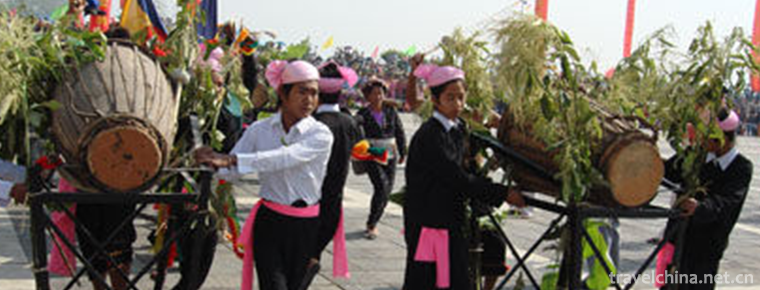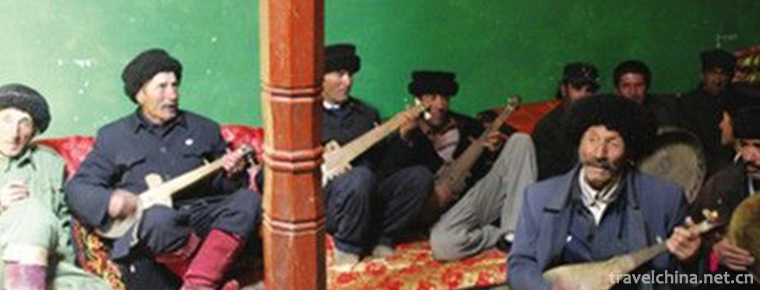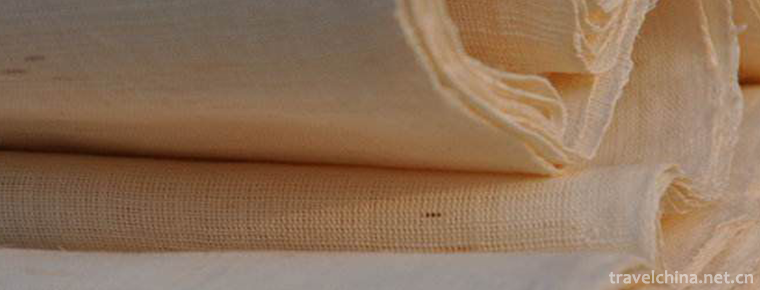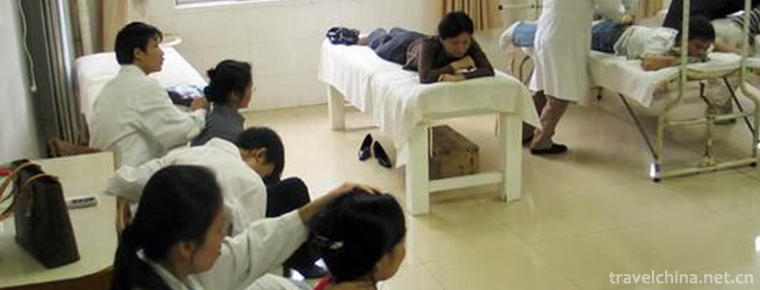Jin men drum
Jin men drum
Jinmen Fagu is a local traditional music and dance art in Tianjin, which appears in the form of performances of the Lao Hui or the Sacred Congregation. In June 2008, the State Council approved the second batch of national intangible cultural heritage list determined by the Ministry of Culture, among which Jinmen Fadrum, represented by Qingyin Fadrum of Hangjia Temple, Yongyin Fadrum of Yangjiazhuang and Xiangyin Fadrum of Liu Yuan, was listed.
Origin and development
Fagu is a kind of entertainment that has been popular among the traditional people in Tianjin for a long time. The word drum comes from Buddhism and refers to drums that are used in Dharma halls. The drum originated from the music played by monks and Taoists, and then spread to the folk. The drum brands were created by the masses themselves and were full of local color.
Fagu in Tianjin began 400 years ago, thrived in the prosperous times of Qingkang and Qianlong, declined in warlord melee and Japanese invasion, destroyed in the Cultural Revolution and wiped out the four old, and was about to die in the city demolition and village disintegration. Today, there will be lost, equipment lost, equipment damaged, veteran musicians old, the team scattered birds and beasts, occasionally some people want to practice, and because of "disturbing the people" have to stop flags... This is the unfortunate encounter and dilemma faced by Fadrum Art under the irresistible historical background. Tianjin Fagu from the original 130 Road, to today's 3 Road (included in the roster), how sad the loss, left behind how magnificent. However, inspired by traditional culture, art belonging to our tradition will also be rejuvenated.
In the old Tianjin folk, drums and drums were often used to celebrate harvest, New Year and perform at various festivals, annual meetings and temple fairs. From the first to the fifteenth day of the first lunar month, the drums of the law in the whole city continued to ring throughout the city, reflecting with various flower fairs and lanterns. Fagu was also an indispensable accompanying music in the Royal Club, and it was very powerful in the whole Royal Club. At the end of Qing Dynasty and the beginning of Republic of China, there were hundreds of drum clubs in Tianjin. By the last imperial assembly in 1936, more than 30 drums and drums clubs had also participated, which showed the wide popularity of the club. According to legend, there were more than 130 drum clubs in old Tianjin. Yangjiazhuang Yongyin Drum Lao Hui and Qingyin Drum Driving Lao Hui, which are located in Hangjiasi Street, are the traditional folk Flower Fairs in Tianjin. It is divided into a literary arena and a martial arts arena. The layout of the arena mainly includes: soft pairs, hard pairs, Gaozhao, tea cookers, tea boxes, snack tips and other props. Most of these devices and decorations are mostly glass inlaid, decorated with paintings, reliefs, carvings, fine workmanship, exquisite shape, and decoration of various schools of calligraphy and painting. Each prop is in pairs, complete sets, and equipped with a matching wooden friend frame and so on. When setting up, they are arranged symmetrically and orderly. For example, at night, when the lights are on, the lights are bright, more magical and spectacular. Its martial arts arena, commonly known as "Jiashichang", the main performance props are: drums, cymbals, cymbals, cymbals, cymbals, crowns. Drum is the first of five tones. Under the leadership of "drum" which is the first of Wanle, these instruments perform their duties according to music score and word plate. When performing, drums, cymbals and cymbals cooperate with each other tacitly, and drums and music are singing in unison. There is a spectacular trend of "mountains and rains are eager to fill the building".
Hangjia Temple was founded in 1731 (Nine Years of Yongzheng in the Qing Dynasty). Half of its deputy was given to Hangjia Temple by Empress Chongzhen of the Ming Dynasty. Hangjia Monastery people established the Hangjia Monastery in Yongzheng of the Qing Dynasty. It is a Pharaonic Drum Club with exquisite props, superb performance skills and graceful dance movements.
Yongyin Fagu Association is located in Yangjiazhuang, Hangjiasi Street, Hexi District, Tianjin. Yongyin Fa Drum Fair is a grand occasion for the prince to travel. Generally, the number of people attending the meeting is about 40, with "Wenchang" and "Wuchang" in one line. Wenchang shoulders more than ten picks, such as tea and cooking, dragon tip, snack box, clothes box, etc. gently, slowly, orderly fluctuations, style and style. Wuchang (mainly using big drums, cymbals, cymbals and other instruments) performs in a compact rhythm, exciting mood and bursting atmosphere.
Most of the stationery and decoration are glass mosaic, decorated with painted, carved relief and other patterns, exquisite sculpture. All kinds of props, instruments and decorations are in pairs, pairs and sets. Guild Ceremony: Symbol opening, sub-flag guard, front banner, rear banner hall, Kowloon lantern held high in the meantime; Arrangement is symmetrical, hierarchical, orderly; For example, at night, the lights are bright, more magical charm. Wuchang cymbals, cymbals and other instruments, accompanied by drums, cards and music scores, flied up and down, bowed left and right, wrapped their heads around, and fished for the moon at the bottom of the sea. Percussion instruments play six kinds of music cards, such as rich and precious picture, Yin and Yang fish, couplets, four seasons, eight diagrams, embroidery ball, etc.
Liu Yuanxiangyin Fagu Association was built in Qingdaoguang Period and participated in various folk festivals in the late Qing Dynasty. It was formerly the accompanying drum meeting of "Niang Niang" in the temple when she was on tour. In front of it was a guard of honor, consisting of a front colour and a band. It was directed by a gong. The front colour was the formation of living things that the lady warned people to avoid and carry with her when she went on tour, including two flags, high-light, soft-pair, hard-pair and lamp-plate. Round cages, octagonal boxes, suitcases, teapots, tea cookers, wind lamps, etc., behind which are drums, cymbals, cymbals, cymbals, bracelets, maps, Jiulian lanterns, etc. There were 40 people holding flags to maintain the program, and 30 teenagers carrying stools for performers to play long tunes. The costumes and props of the meeting are well preserved. The original ten sets of songs of Xiangyin drums are retained, and five sets are later retained. In the first month of the old calendar year, the heads of the Flower Fairs consulted and exchanged courtesy worship with the theme of celebrating harvest and celebrating the New Year. Then on the day of the trip of Madame Sanniang in March every year, several Flower Fairs gathered in Beichang. The auspicious drum was accompanied by the driving party in the imperial assembly, so it was arranged around Madame's treasures, arranged and performed. During the performance of the flower fair, the auspicious drum was a unique group of colorful lights. Brightly displayed in front of the masses, forming a magnificent landscape composed of colorful lanterns. Liu Yuan's auspicious sound drums will be magnificent and magnificent, with the most strong traditional folk culture characteristics.
artistic characteristics
Tianjin Fagu was founded with Tianjin Shiwei, so it contains distinct elements of urban culture - solemn performance, luxurious decoration, a large number of people, advocating etiquette. It is a folk art form with distinct urban style. Its uniqueness manifests itself in: regional uniqueness (unique to Tianjin city and suburb); uniqueness of skills (combination of music and dance): elegance of music (five-tone repetition); vigor of dance (compatibility of dance and martial arts); luxury of decoration (exquisite sculpture); huge team (more attendants than performers), which constitute the metropolitan style of Fagu in Tianjin. Lattice. The performance has the features of solemnity (standing posture), majesty (dancing posture) and calmnness (expression). Its religion and folklore are in harmony - both elegant and popular, solemn and luxurious, without losing the solemn and warm style of Honor - the unity of royal style and religious style.
The style of Tianjin dance is in Fagu. It has remarkable characteristics of Yanzhao culture. It has formed a combination of farming culture (closure and continuation) and ocean culture (openness and tolerance), including canal culture, immigration culture, gang culture, colonial culture and modern culture. It has formed the connotation of Tianjin regional culture and the characteristics of urban culture and influenced the development of folk dance.
Reality
With the passage of time, the traditional cultural atmosphere is gradually lacking, and Jinmen Fagu is also in a dilemma of lack of financial support.
After being successfully selected into the national intangible cultural heritage list, the status quo of the two drum clubs remains. Although Fadrum has a better reputation than before, it has not received any financial support.
The old drum-driving Club of Qingyin Dharma in Hangjia Temple is a drum-driving club with exquisite props, superb performance skills and graceful dance movements. At the beginning, Lao Hui was a folk grammar drum, then it was introduced into the martial drum, adding cymbals, cymbals and so on. The skills were handed down from generation to generation.
However, with the passage of time, driving performers have lost their original glory. Although performers can be "reborn" only by re-plating half a kilogram of full gold, there is nothing they can do with limited funding.
Another problem is the lack of successors. As members grow older and younger, fewer young people are willing to learn this kind of folk culture and skills, and the old club has fallen far short of the number of people needed for performances.
The same problem still exists in Yangjiazhuang Yongyin Drum Club. The original Yangjiazhuang Yongyin Drum Club has been handed down from generation to generation. With the demolition and reconstruction of Hexi District, Yangjiazhuang no longer exists. The spread of Fagu Club is scattered all over the city, and there is no fixed rehearsal hall, and the funds also have problems.
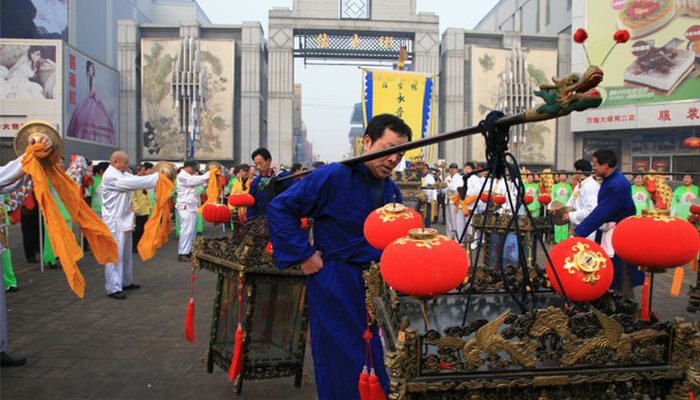
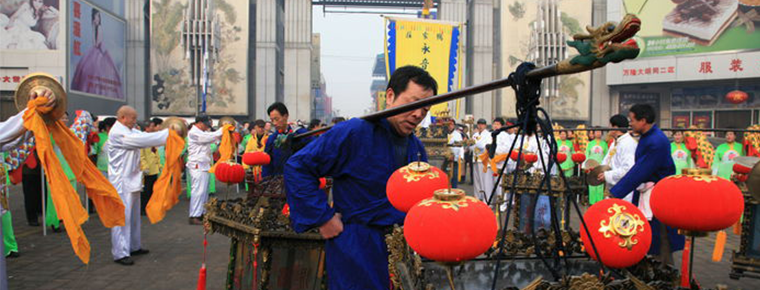
Jin men drum
-
Leshan Giant Buddha
Located on the East Bank of Minjiang River in Leshan City
Views: 195 Time 2018-10-13 -
Five spring mountain
Wuquan Mountain is located at the northern foot of Gaolan Mountain, south of Lanzhou City. It is a famous Longshang resort with a history of more than 2,000 years
Views: 172 Time 2018-12-22 -
Western Royal Tombs of the Qing Dynasty
Xiling Tomb of Qing Dynasty is located at the foot of Yongning Mountain, 15 kilometers west of Yixian Town, Baoding City, Hebei Province, more than 120 kilometers away from Beijing
Views: 239 Time 2019-02-07 -
Butterfly Bucket Encouragement of the Browns
Buzz drum dance is a kind of collective dance of men and women of ancestral origin. It has great improvisation. There are two kinds of dance methods: He Xinfang and
Views: 327 Time 2019-04-04 -
72 Sorcery Music of Lingyun Zhuang Nationality
The 72 witchcraft tunes of Lingyun Zhuang nationality originated in Lingyun County, Guangxi, mainly centered on Sicheng Town, where the county government is located. It is a tune sung by the Zhuang wi
Views: 206 Time 2019-05-13 -
Mongolian Khantin Music
The most important component of Mongolian traditional music is court music, which is Mongolian Khan music. Successfully selected into the fourth batch of national intangible cultural heritage list.
Views: 136 Time 2019-06-03 -
Water Encouragement
Water drum dance is a kind of popular dance spread between the De'ang and Miao nationalities. It combines water, drum and dance to worship ancestors, pray for good weather and peace in villages. Howev
Views: 156 Time 2019-06-15 -
Tajik Folk Songs
Tajik folk songs are very rich in content. The folk songs handed down to this day include folk songs reflecting ancient social life, customs and customs, eulogizing love and religious rituals. The mai
Views: 188 Time 2019-06-17 -
Weaving Techniques of Summer Cloth
Wanzai summer cloth is completely manually woven. Its production process mainly consists of ramie treatment, yarn performance and weaving. It needs many processes to weave.
Views: 225 Time 2019-07-01 -
Bone setting therapy of traditional Chinese medicine
Bone-setting, traditional Chinese medicine refers to the treatment of fracture, dislocation and other diseases by pushing, pulling, pressing and pressing. Orthopaedics, as a specialty name, is a speci
Views: 331 Time 2019-08-10 -
Muli Temple
Muli temple is a key cultural relics protection unit in Sichuan Province. It is located at the foot of daniyabu mountain, youyidian village, Taoba Township, Muli Tibetan Autonomous County. It is more than 300 kilometers away from Xichang City
Views: 296 Time 2020-10-16 -
Chengdu Giant Panda Base tourist service
The tourist center is located 40 meters to the left of the entrance door of the scenic area (first floor of the Giant Panda Museum), with a building area of more than 400 square meters.
Views: 351 Time 2020-12-13
